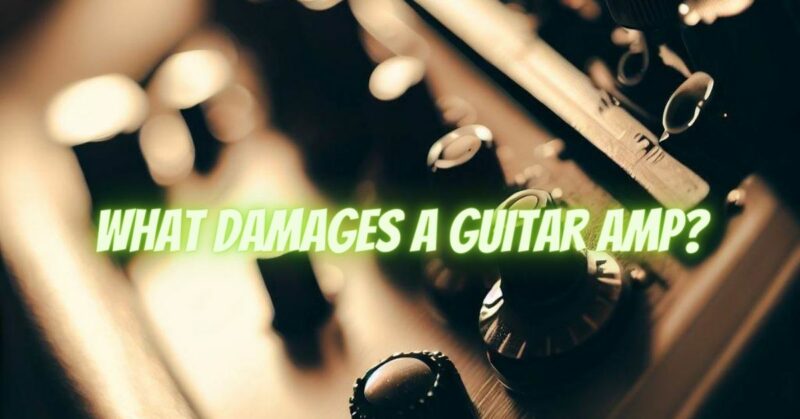Your guitar amp is a crucial piece of equipment that amplifies your sound and brings your music to life. However, like any electronic device, guitar amps are susceptible to various potential hazards that can lead to damage or malfunction. In this article, we will explore some common causes of guitar amp damage and provide tips on how to protect and maintain your beloved amplifier.
- Power Surges and Electrical Issues:
Power surges, voltage spikes, or fluctuations in the electrical supply can pose a significant risk to your guitar amp. They can cause damage to internal components, including transformers, capacitors, and other sensitive circuitry. To protect your amp, consider using a surge protector or a power conditioner to regulate the electrical flow and safeguard against sudden power surges.
- Incorrect Speaker Impedance:
Mismatched speaker impedance can strain the output stage of your guitar amp, potentially causing overheating or even damaging the amplifier. Always ensure that the speaker impedance matches the specifications outlined by the amp manufacturer. Consult the user manual or seek professional advice to ensure proper speaker impedance matching.
- Overheating:
Extended periods of high-volume playing or inadequate ventilation can lead to overheating in your guitar amp. Excessive heat can damage components, including transformers, resistors, and capacitors. To prevent overheating, ensure that your amp has sufficient airflow, avoid covering ventilation slots, and take breaks during prolonged high-volume playing sessions.
- Improper Handling and Transport:
Mishandling or rough transport can result in physical damage to your guitar amp. Dropping, bumping, or subjecting the amp to excessive vibrations can loosen internal components, break solder joints, or damage tubes. Always handle your amp with care, use proper cases or padded bags during transport, and avoid placing heavy objects on top of your amplifier.
- Moisture and Environmental Factors:
Exposure to moisture, humidity, or extreme temperature conditions can harm your guitar amp. Moisture can corrode internal components, cause electrical shorts, or lead to rusting. Keep your amp in a dry environment, away from water sources, and avoid exposing it to extreme temperature fluctuations.
- Tube Wear and Tear:
Tube-based amplifiers rely on vacuum tubes to produce their signature tone. Tubes degrade over time and may need periodic replacement. Prolonged use of worn-out tubes can result in poor sound quality, excessive noise, or even damage to other components. Regularly monitor the performance of your tubes and replace them when necessary to ensure optimal tone and longevity.
To help prevent damage to your guitar amp, you should:
- Ventilate your amp properly: Make sure that your amp has enough ventilation to prevent it from overheating.
- Use a surge protector: Use a surge protector with your amp to protect it from power surges.
- Store your amp in a cool, dry place: If you live in a humid climate, store your amp in a cool, dry place.
- Be careful with your amp: Handle your amp with care to prevent physical damage.
- Use your amp properly: Do not crank the volume up too high and use the amp within its recommended power range.
Conclusion:
Protecting your guitar amp from damage is essential for maintaining its performance, longevity, and the quality of your sound. By understanding the common causes of amp damage and implementing preventative measures such as surge protection, proper handling, adequate ventilation, and maintenance, you can ensure that your amplifier remains in excellent working condition for years to come. Remember, a well-cared-for amp will reward you with reliable performance and the best possible tone.


